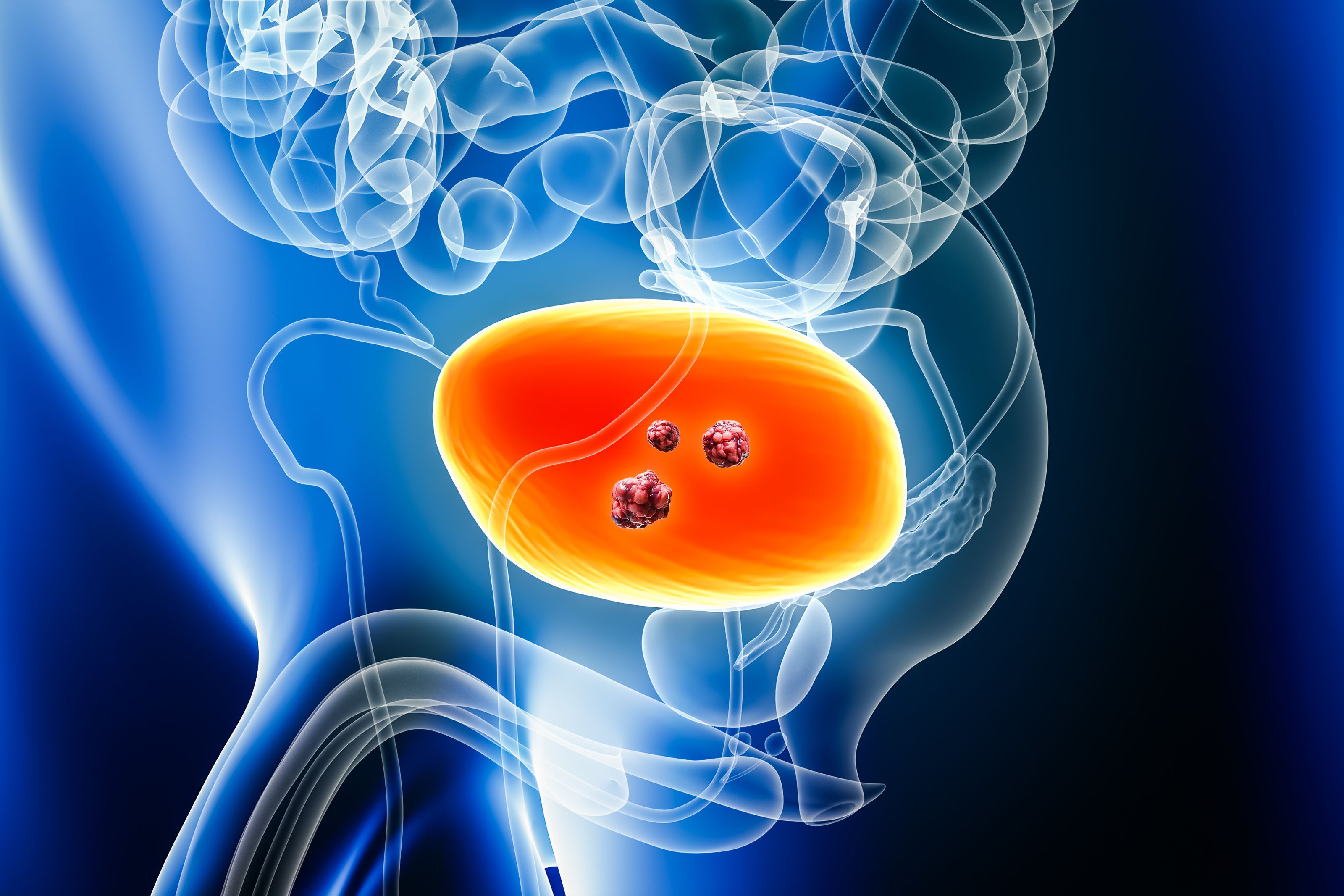News
Article
Enfortumab Vedotin Effective in Patients With Urothelial Cancer Outside of Clinical Trials
Author(s):
Enfortumab vedotin showed a robust disease control rate in patients with urothelial cancer outside of a clinical trial, and its efficacy was not inferior in patients with diabetes and/or neuropathy.
Enfortumab vedotin (EV) was associated with a robust disease control rate in patients with advanced urothelial carcinoma (aUC) outside of clinical trials, and it showed similar efficacy in patients with and without neuropathy or diabetes, according to posters presented at the European Society for Medical Oncology Congress 2024.
The first poster1 was aimed at assessing the efficacy of EV combined with pembrolizumab (EV/P), as the combination had previously been shown to improve outcomes in patients with aUC when compared with platinum-based chemotherapy. However, there was a lack of data on the outcomes of the combination therapy when used outside of clinical trials, and biomarkers associated with benefit from EV/P treatment were also not evaluated thoroughly.
The UNITE study provided data on patients who were treated with EV/P. Tumor mutation burden and genomic alterations from next-generation sequencing were all assessed as biomarkers in patients who had data available to use in the study. A univariate analysis was used to assess the effect of a biomarker on the clinical outcome and a multivariate analysis was used to adjust for other variables. A log-rank test was used to measure progression-free survival (PFS) and overall survival (OS), and objective response rate (ORR) was assessed and compared in patients who had imaging and at least 1 cycle of EV/P. Patients were excluded if they were treated during clinical trials.
Enfortumab vedotin was effective in patients with diabetes mellitus and neuropathy outside of clinical trials | Image credit: Matthieu - stock.adobe.com

There were 118 patients with next-generation sequencing data available, with a median age of 71 years, 74% of the patients being men, and 84% identifying as White. A total of 74% had Eastern Cooperative Oncology Group (ECOG) performance score (PS) of 0/1, 63% had a pure urothelial histology, and 16% had liver metastases. ECOG PS 0/1 was associated with longer PFS and OS for patients. Longer PFS and OS was also associated with albumin of 3.5 mg/dL or higher, neutrophil-to-lymphocyte ratio of 5 or more, and hemoglobin of 10 g/dL or more.
Alterations in KMT2D (HR, 2.2; 95% CI, 1.0-4.5) and TP53 (HR, 2.3; 95% CI, 1.2-4.2) were associated with shorter PFS whereas shorter OS was associated with alterations in TP53 (HR, 2.3; 95% CI, 1.0-5.4). The disease control rate (DCR) was found to be 84% (95% CI, 77%-90%) overall and ORR was 51% (95% CI, 42%-60%).
EV/P was found to have a higher DCR in patients using the combination therapy outside of clinical trials but the ORR was more modest when compared with first-line clinical trials. Inferior outcomes were associated with TP53 and KMT2D alterations.
A second poster2 built on the first finding by focusing on the efficacy of EV when used in patients with neuropathy and/or diabetes, who are often excluded from the clinical trials assessing its efficacy. EV has been used and approved for aUC both as monotherapy and in the EV/P combination. The poster aimed to assess outcomes for patients with either diabetes, neuropathy, or both when using EV to treat their aUC.
The study also used data from the UNITE multisite retrospective study, which collects data from 17 sites across the US. A logistic regression model was used to evaluate ORR whereas a Kaplan-Meier method and Cox models were used to analyze duration of response (DOR), PFS, and OS. Covariates included liver metastases, number of treatment lines, ECOG PS, body mass index, histology subtype, age, and sex.
There were 666 patients included in the study, of whom 193 had neuropathy, 77 had diabetes, 46 had both, and 343 had neither; there were 7 participants with incomplete data who couldn’t be added to any of these groups. The median age of the cohort was 70 years, 71% were men, and 89% were White. A total of 78% of the participants had an ECOG PS of 0/1 and 13% received EV in the frontline setting.
Significantly lower PFS was found to be associated with baseline neuropathy (HR, 0.81; 95% CI, 0.66-0.98) whereas OS was not significantly different (HR, 0.86; 95% CI, 0.69-1.08). PFS (HR, 1.19; 95% CI, 0.93-1.53) and OS (HR, 1.20; 95% CI, 0.91-1.59) were not associated with baseline diabetes.
The researchers concluded that baseline neuropathy and diabetes should not lead to inferior outcomes for patients using EV. The comorbidities should not affect the use of EV treatment but careful monitoring of toxicities related to neuropathy, diabetes, and EV should be conducted when using EV in these patients.
References
- Jindal T, Jiang CY, Alhalabi O, et al. Enfortumab vedotin (EV) + pembrolizumab (P) outcomes outside clinical trials and biomarkers of benefit in patients (pts)with advanced urothelial carcinoma: analysis of the UNITE study. Presented at: European Society for Medical Oncology Congress 2024; September 13-17, 2024; Barcelona, Spain. Abstract 1988P.
- Jang A, Jindal T, Jiang CY, et al. Efficacy of enfortumab vedotin (EV) in patients (pts) with (w) advanced urothelial carcinoma (aUC) who have baseline neuropathy (N) and/or diabetes mellitus (DM): a UNITE study analysis. Presented at: European Society for Medical Oncology Congress 2024; September 13-17, 2024; Barcelona, Spain. Abstract 1989P.

The Importance of Examining and Preventing Atrial Fibrillation




